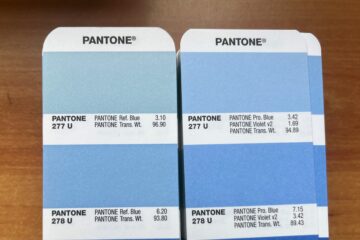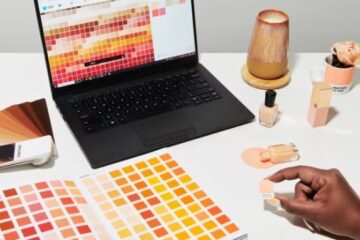The Guardian: John R MacArthur
For ‘deeper reading’ among children aged 10-12, paper trumps screens. What does it mean when schools are going digital?

photo credit: Gaelle Marcel, Unsplash
The nationwide collapse in reading scores among American youth has lately captured the attention – if not the concern – of headline writers, educators and government bureaucrats.
The Department of Education’s most recent survey, released in June, was certainly sensational: it found that text comprehension skills of 13-year-olds had declined an average of four points since the Covid-affected school year of 2019-2020, and more alarmingly that the average drop was seven points compared with the 2012 figure. The results for the worst-performing students fell below the reading skill level recorded in 1971, when the first national study was conducted.
Unsurprisingly, the blame for this dismal news has been assigned by politicians to the easiest, more obvious targets – Covid-19 and the resultant lockdown. Remote learning was bad for students, according to Biden administration officials, so the pandemic must be the chief villain. Conservatives don’t disagree, but they prefer to blame the teachers’ unions for encouraging their members to teach remotely – for them a greater villain than Covid is the president of the American Federation of Teachers, Randi Weingarten, a powerful Democrat who lobbied successfully to prolong school shutdowns.
Neither the bureaucrats nor the critics of the teachers’ union are wrong, of course. Common sense tells us that a child alone in her bedroom, staring at the image of a teacher on a computer screen (with a smartphone close at hand but hidden from the teacher’s view), is not fully focused on learning.
But while everyone bemoans the lockdown, there’s been curiously little discussion in this debate about the physical object most children use to read, which, starting long before the arrival of Covid, has increasingly been an illuminated screen displaying pixelated type instead of a printed or photocopied text. What if the principal culprit behind the fall of middle-school literacy is neither a virus, nor a union leader, nor “remote learning”?
Until recently there has been no scientific answer to this urgent question, but a soon-to-be published, groundbreaking study from neuroscientists at Columbia University’s Teachers College has come down decisively on the matter: for “deeper reading” there is a clear advantage to reading a text on paper, rather than on a screen, where “shallow reading was observed”.
Using a sample of 59 children aged 10 to 12, a team led by Dr Karen Froud asked its subjects to read original texts in both formats while wearing hair nets filled with electrodes that permitted the researchers to analyze variations in the children’s brain responses. Performed in a laboratory at Teachers College with strict controls, the study used an entirely new method of word association in which the children “performed single-word semantic judgment tasks” after reading the passages.
Vital to the usefulness of the study was the age of the participants – a three-year period that is “critical in reading development” – since fourth grade is when a crucial shift occurs from what another researcher describes as “learning to read” to “reading to learn”.
Froud and her team are cautious in their conclusions and reluctant to make hard recommendations for classroom protocol and curriculum. Nevertheless, the researchers state: “We do think that these study outcomes warrant adding our voices … in suggesting that we should not yet throw away printed books, since we were able to observe in our participant sample an advantage for depth of processing when reading from print.”
I would go even further than Froud in delineating what’s at stake. For more than a decade, social scientists, including the Norwegian scholar Anne Mangen, have been reporting on the superiority of reading comprehension and retention on paper. As Froud’s team says in its article: “Reading both expository and complex texts from paper seems to be consistently associated with deeper comprehension and learning” across the full range of social scientific literature.
But the work of Mangen and others hasn’t influenced local school boards, such as Houston’s, which keep throwing out printed books and closing libraries in favor of digital teaching programs and Google Chromebooks. Drunk on the magical realism and exaggerated promises of the “digital revolution”, school districts around the country are eagerly converting to computerized test-taking and screen-reading programs at the precise moment when rigorous scientific research is showing that the old-fashioned paper method is better for teaching children how to read.
Indeed, for the tech boosters, Covid really wasn’t all bad for public-school education: “As much as the pandemic was an awful time period,” says Todd Winch, the Levittown, Long Island, school superintendent, “one silver lining was it pushed us forward to quickly add tech supports.” Newsday enthusiastically reports: “Island schools are going all-in on high tech, with teachers saying they are using computer programs such as Google Classroom, I-Ready, and Canvas to deliver tests and assignments and to grade papers.”
Terrific, especially for Google, which was slated to sell 600 Chromebooks to the Jericho school district, and which since 2020 has sold nearly $14bn worth of the cheap laptops to K-12 schools and universities.
If only Winch and his colleagues had attended the Teachers College symposium that presented the Froud study last September. The star panelist was the nation’s leading expert on reading and the brain, John Gabrieli, an MIT neuroscientist who is skeptical about the promises of big tech and its salesmen: “I am impressed how educational technology has had no effect on scale, on reading outcomes, on reading difficulties, on equity issues,” he told the New York audience.
“How is it that none of it has lifted, on any scale, reading? … It’s like people just say, ‘Here is a product. If you can get it into a thousand classrooms, we’ll make a bunch of money.’ And that’s OK; that’s our system. We just have to evaluate which technology is helping people, and then promote that technology over the marketing of technology that has made no difference on behalf of students … It’s all been product and not purpose.”
I’ll only take issue with the notion that it’s “OK” to rob kids of their full intellectual potential in the service of sales – before they even get started understanding what it means to think, let alone read.
-
John R MacArthur is the publisher of Harper’s Magazine and author of several books. He participated in the fundraising necessary for Karen Froud’s research study


